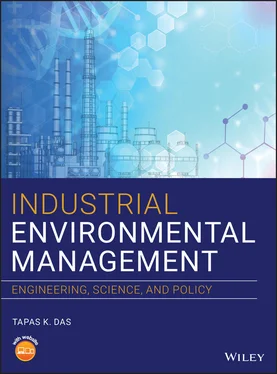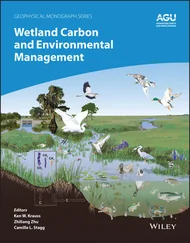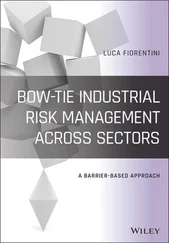Environmental economics
Sustainable development issues
Environmental assessment, modeling, forecasting, and “hand‐casting”
Corporate environmental management activities
Pollution recognition and control
Environmental enforcement and legislation
Environmental and development institutions and ethics
Environmental management systems and quality issues
Environmental planning and management
Assessment of stakeholders involved in environmental management
Environmental perceptions and education
Community participation
Natural resources management
Environmental rehabilitation
Environmental politics
Environment aid and institution building
Generally, the environmental managers must ensure there is optimum balance between environmental protection and allowing human liberty. Then, the question is “how it can be done?” Basically, there are several steps in environmental management implementation. First, we need to identify goals and define problems, then determine appropriate actions, which will be continued as draw‐up plan. Next, implement the plan, which will be followed by ongoing development management. After that monitor and evaluate the situation. If there are adjustments needed, do it. Then finally when the exact model and standards of environmental management are generated, continuous development will be conducted.
The overall objective of environmental management is improved human life quality. It involves the mobilization of resources and the use of government to administer the use of both natural and economic goods and services. It is based on the principles of ecology. It uses systems analysis and conflict resolution to distribute the costs and benefits of development activities throughout the affected populations and seeks to protect the activities of development from natural hazards. Conflict identification is one of the most important tasks in environmental management planning and the resolution of conflicts is a fundamental part of what makes up “environmentally sound development. ISO (International Organization for Standardization) 14000 is a family of standards related to environmental management that exists to help organizations (i) minimize how their operations (processes, etc.) negatively affect the environment (i.e. cause adverse changes to air, water, or land); (ii) comply with applicable laws, regulations, and other environmentally oriented requirements; and (iii) continually improve in the above.
ISO is the International Organization for Standardization. It has a membership of 160 national standards institutes from countries large and small, industrialized, developing and in transition, in all regions of the world. ISO's portfolio of more than 18 000 standards provides practical tools for all 3 dimensions of sustainable development: economic, environment, and societal.
ISO standards for business, government, and society as a whole make a positive contribution to the world we live in. They ensure vital features such as quality, ecology, safety, economy, reliability, compatibility, interoperability, conformity, efficiency, and effectiveness. They facilitate trade, spread knowledge, and share technological advances and good management practice. ISO develops only those standards that are required by the market. This work is carried out by experts on loan from the industrial, technical, and business sectors which subsequently put them to use. These experts may be joined by others with relevant knowledge, such as representatives of governmental agencies, testing laboratories, consumer association and academia, and by nongovernmental or other stakeholder organizations that have a specific interest in the issues addressed in the standards. Published under the designation of International Standards, ISO standards represent an international consensus on the state of the art in the technology or good practice concerned.
1.1.2 ISO and the Environment
ISO has a multifaceted approach to meeting the needs of all stakeholders from business, industry, governmental authorities, and nongovernmental organizations, as well as consumers, in the field of the environment.
1 ISO develops standards that help organizations to take a proactive approach to managing environmental issues: the ISO 14000 family of environmental management standards can be implemented in any type of organization in either public or private sectors – from companies to administrations to public utilities.
2 ISO helps to meet the challenge of climate change with standards for greenhouse gas accounting, verification and emissions trading, and for measuring the carbon footprint of products.
3 ISO develops standard documents to facilitate the fusion of business and environmental goals by encouraging the inclusion of environmental aspects in product design.
4 ISO offers a wide‐ranging portfolio of standards for sampling and test methods to deal with specific environmental challenges. It has developed some 570 International Standards for the monitoring of such aspects as the quality of air, water and the soil, as well as noise, radiation, and for controlling the transport of dangerous goods. They also serve in a number of countries as the technical basis for environmental regulations.
ISO 14001 was developed primarily to assist companies with a framework for better management control that can result in reducing their environmental impacts. In addition to improvements in performance, organizations can reap a number of economic benefits, including higher conformance with legislative and regulatory requirements (Sheldon 1997) by adopting the ISO standard. By minimizing the risk of regulatory and environmental liability fines and improving an organization's efficiency (Delmas 2009), benefits can include a reduction in waste, consumption of resources, and operating costs. Secondly, as an internationally recognized standard, businesses operating in multiple locations across the globe can leverage their conformance to ISO 14001, eliminating the need for multiple registrations or certifications (Hutchens 2010). Thirdly, there has been a push in the last decade by consumers for companies to adopt better internal controls, making the incorporation of ISO 14001 a smart approach for the long‐term viability of businesses. This can provide them with a competitive advantage against companies that do not adopt the standard (Potoski and Prakash 2005). This in turn can have a positive impact on a company's asset value (Van der Veldt 1997). It can lead to improved public perceptions of the business, placing them in a better position to operate in the international marketplace (Potoski and Prakash 2005; Sheldon 1997). The use of ISO 14001 can demonstrate an innovative and forward‐thinking approach to customers and prospective employees. It can increase a business's access to new customers and business partners. In some markets it can potentially reduce public liability insurance costs. It can serve to reduce trade barriers between registered businesses (Van der Veldt 1997). There is growing interest in including certification to ISO 14001 in tenders for public–private partnerships for infrastructure renewal. Evidence of value in terms of environmental quality and benefit to the taxpayer has been shown in highway projects in Canada.
ISO 14001 addresses not only the environmental aspects of an organization's processes but also those of its products and services. Therefore, ISO/TC 207 has developed additional tools to assist in addressing such aspects. Life‐cycle assessment (LCA) is a tool for identifying and evaluating the environmental aspects of products and services from the “cradle to the grave”: from the extraction of resource inputs to the eventual disposal of the product or its waste. The ISO 14040 standards give guidelines on the principles and conduct of LCA studies that provide an organization with information on how to reduce the overall environmental impact of its products and services. ISO 14064 parts 1, 2, and 3 are international greenhouse gas (GHG) accounting and verification standards which provide a set of clear and verifiable requirements to support organizations and proponents of GHG emission reduction projects.
Читать дальше












